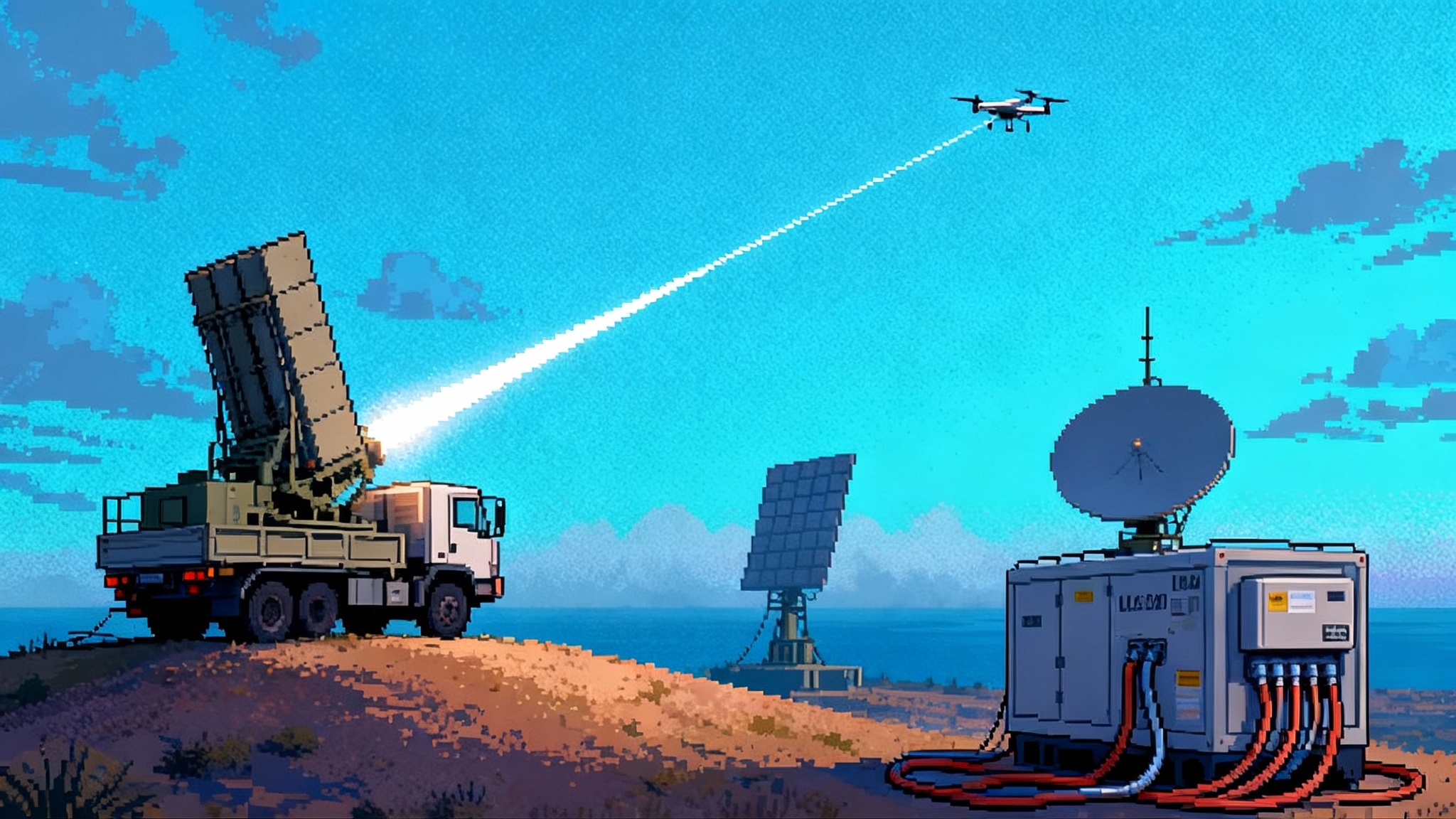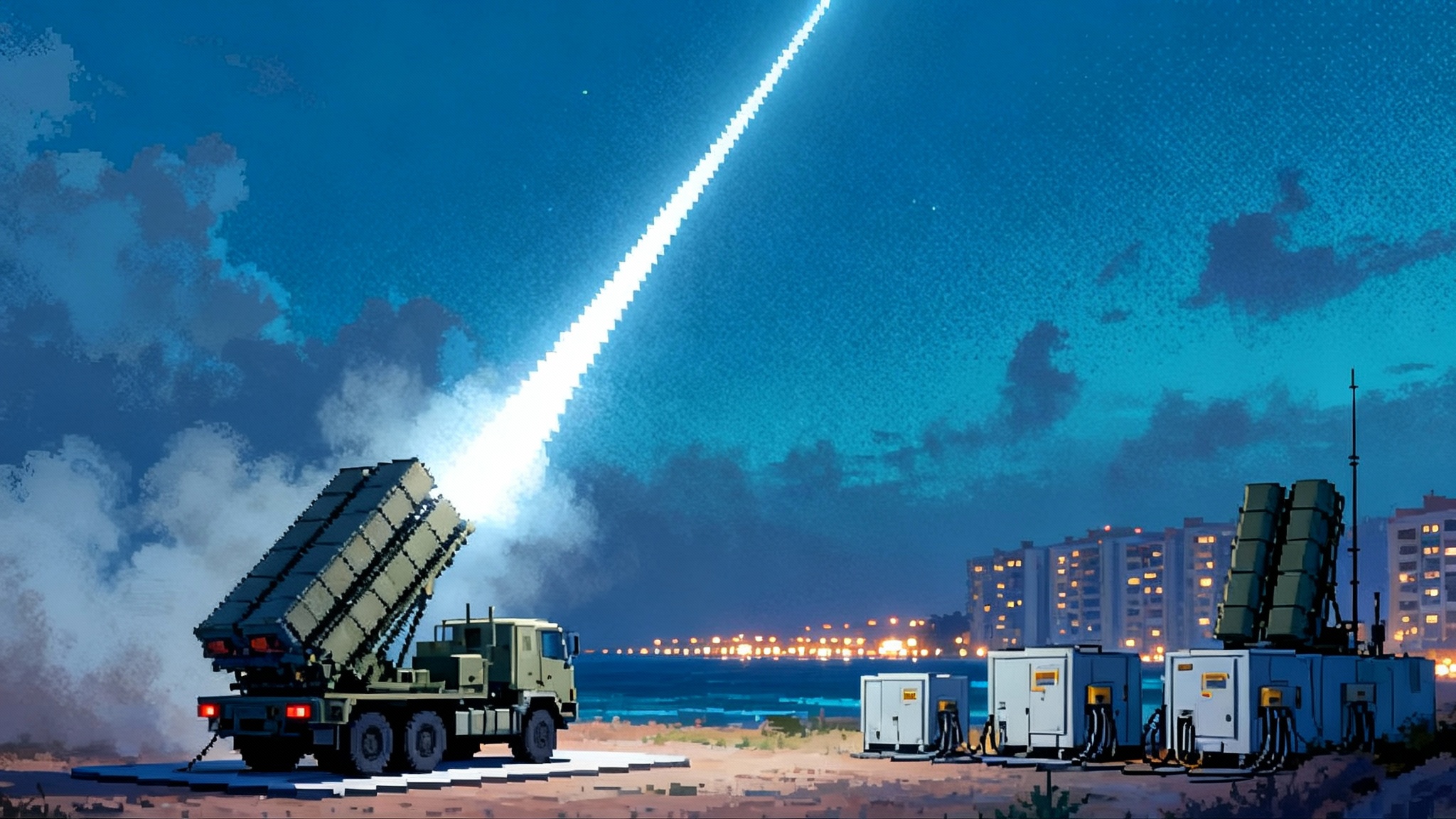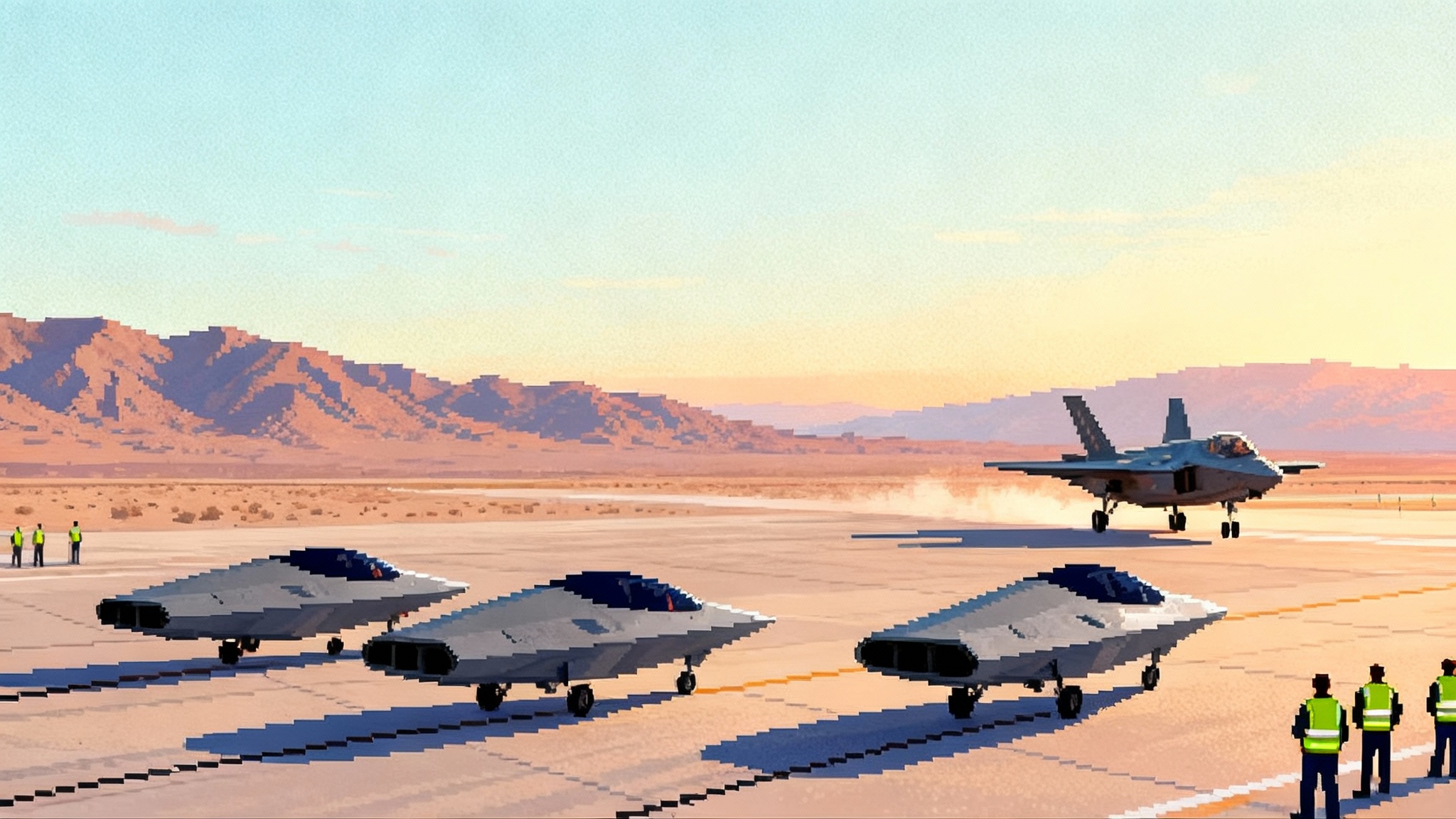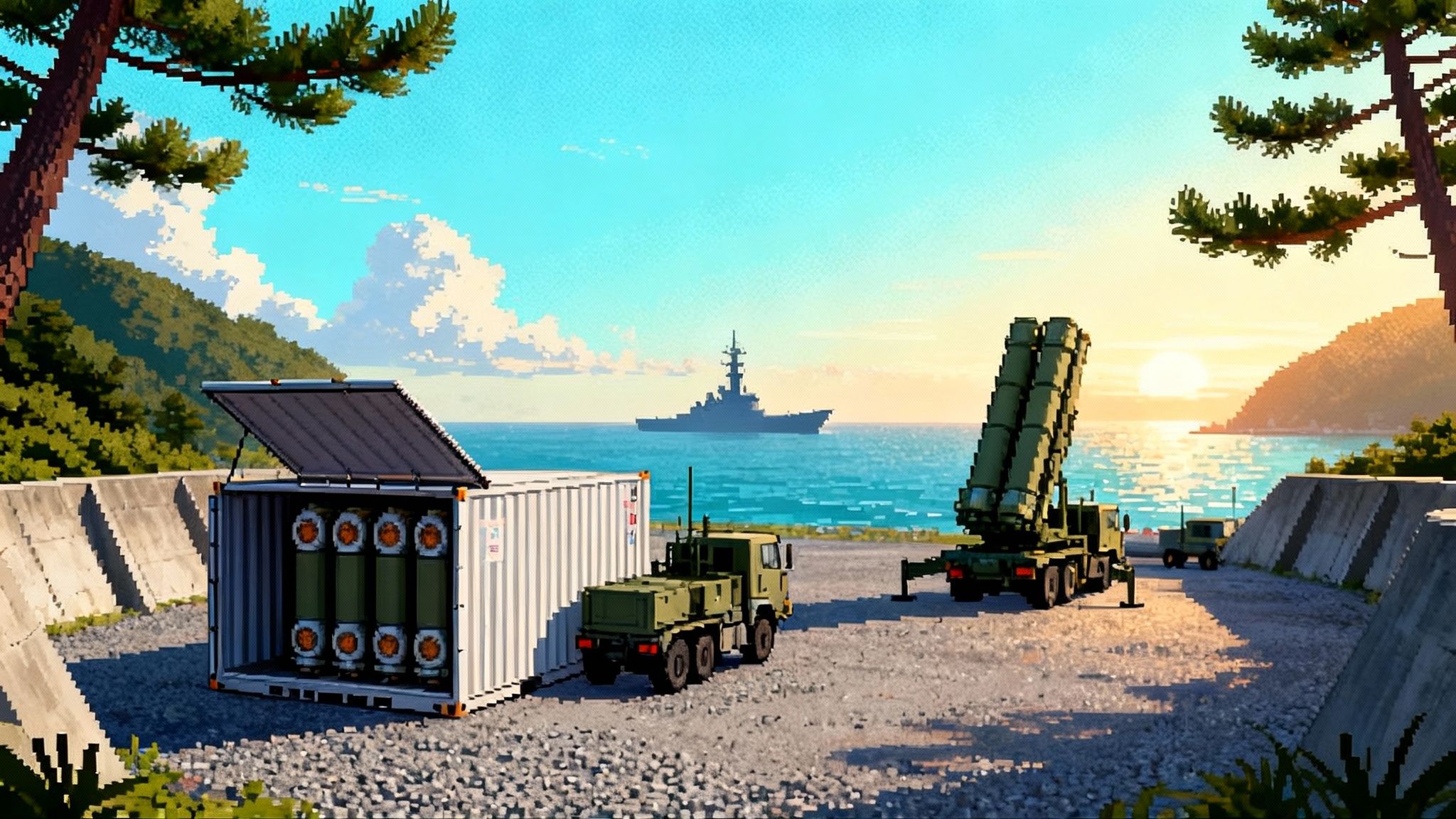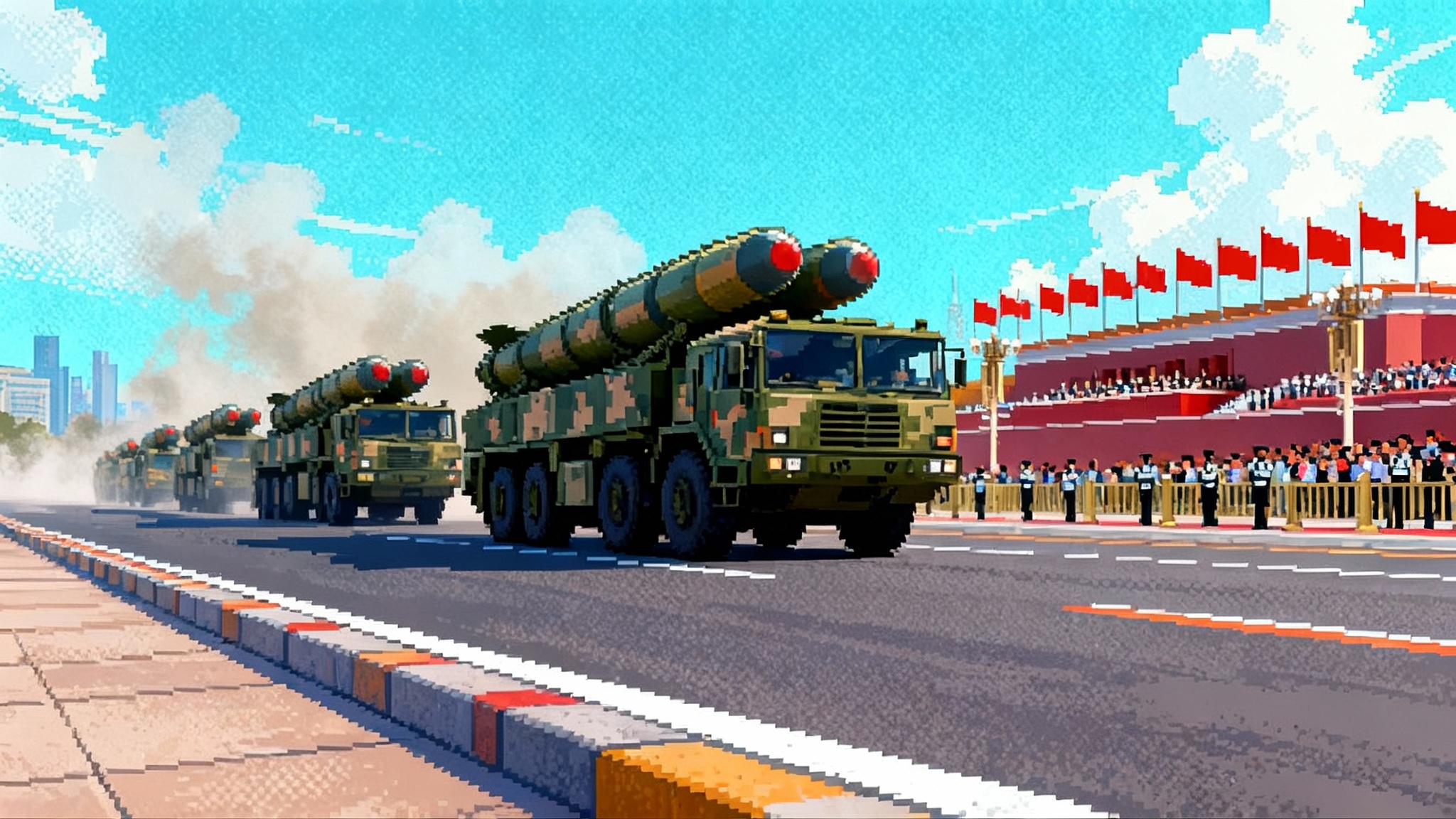Replicator Leaves Hype as Pentagon Fields Attritable Drones
Replicator is leaving the podium and hitting the pallet. The Pentagon’s first tranche is delivering Switchblade 600 and other all‑domain attritable systems now, accelerating buys, widening the vendor base, and reshaping Indo‑Pacific deterrence. Here is what tranche 1 really changes and what comes next.
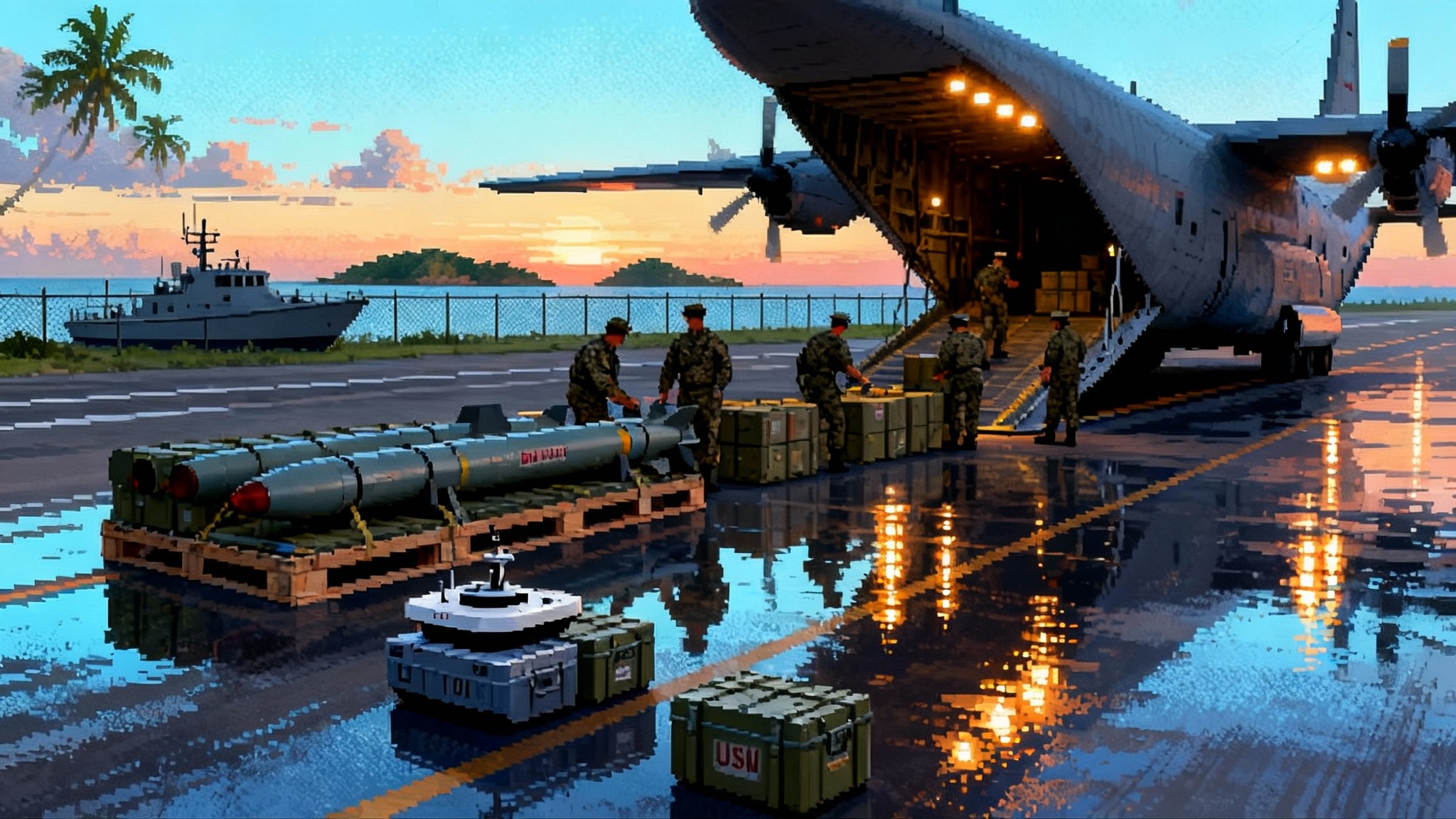
From slogan to shipping crates
Replicator was pitched as a sprint to deliver small, smart, cheap, and many autonomous systems at operational scale within 18 to 24 months. That sprint is now visible on the tarmac. The Department of Defense confirmed the first tranche, centered on all domain attritable autonomy, and named Switchblade 600 among the initial buys, with funding in fiscal year 2024 and a similar request in 2025. Some maritime and counter‑UAS systems are included, with additional selections kept classified. The program’s stated goal remains fielding multiple thousands for Indo‑Pacific needs. Those details are in the department’s own first tranche announcement.
Two clarifications matter. First, ADA2 is not a single platform. It is a category and design philosophy that prizes systems that are affordable enough to risk, yet intelligent enough to matter. Second, the first tranche is a mix of known and undisclosed systems, which is intentional. Denying an adversary a precise order of battle is part of deterrence.
Attritable autonomy changes the math
Attritable does not mean disposable. It means commanders can accept higher risk of loss because the unit price, training time, and supply chain demands are far lower than exquisite systems. A Switchblade 600 lost to a hostile jammer or a stray tree branch is painful, but it is not the same as losing a fighter sortie or a multimillion dollar missile.
This shift rewrites several ledgers at once.
- Cost exchange ratio. A loitering munition that can threaten armor, a radar, or a fast‑attack craft puts pressure on adversaries to spend more on defense than you spend on offense. If a cheap drone forces a ship to radiate, maneuver, or fire an interceptor, it already banked deterrent value.
- Procurement tempo. The Replicator process pulls on existing lines and near‑ready designs, then solves integration in parallel. That reduces time to field while the services figure out doctrine in exercises instead of waiting for perfect requirements.
- Industrial base. Volume orders for small systems help second‑tier manufacturers tool up, and that capacity can be redirected in a crisis. The program is deliberately widening the vendor base in air and sea, so there is less single‑point fragility.
What is actually in tranche 1
Publicly named so far: AeroVironment’s Switchblade 600 loitering munition in the air domain. Less public but stated in outline: small uncrewed surface vessels and counter‑UAS kits. Several other systems remain behind the classification fence. That mix matters. It hints at layered employment, not one hero product. Loitering munitions to find and finish. USVs to sense and harass in littorals. Counter‑UAS to protect the force from the very tactics the United States is adopting.
If you are looking for a silver bullet swarm, that is not tranche 1. The Pentagon is buying a starter set that units can actually field this year, then learn with fast feedback.
The tech stack, from radio to reasoning
Even the most attritable drone rides a stack that must survive a hostile spectrum, salt spray, and operator stress. Three layers decide whether the mass you buy turns into effects.
- Command and control links. Expect a blend of line‑of‑sight digital links for short‑range control, mesh radios for team movement, and reachback through gateways on manned aircraft, ships, or towers. In the Indo‑Pacific, long legs and water gaps make beyond line‑of‑sight handoffs vital. Systems need low‑probability intercept and detection techniques, frequency agility, and quick fallback modes when jamming starts. The best employment looks like mission command at radio level. Operators give intents and no‑go zones, not joystick‑level micromanagement. This mirrors lessons from crewed‑uncrewed teaming as autonomous wingmen fly.
- Onboard autonomy. The point of ADA2 is to shrink the comms umbilical. That means navigation that does not die when GPS wobbles, target tracking that persists through occlusion and smoke, and autonomy behaviors that respect positive control. Switchblade’s wave‑off and recommit features are a window into that philosophy. On USVs, autonomy adds collision avoidance, station keeping, and group behaviors that let small boats cover a strait without babysitting every hull.
- EW resilience. The stack must assume degraded. That pushes compute to the edge and keeps payloads simple. It also means multi‑sensor fusion so a drone can navigate by inertial, visual odometry, and terrain correlation when RF gets ugly. The goal is graceful degradation, not mission collapse.
Training and logistics, not afterthoughts
The tech only matters if units can adopt it quickly. Tranche 1 is already forcing changes in training, sustainment, and paperwork.
- Training. Most loitering munitions are closer to tablet workflows than to fighter cockpits. That shortens training cycles and allows distributed rehearsal. Expect more simulator time, more role‑based crew drills, and more non‑commissioned officers certified to run small detachments. The first time a platoon fires a live munition should not be in contact.
- Logistics. Batteries, launch tubes, spare airframes, and field‑serviceable parts can be prepositioned in theater and on partner islands. Shipping containers become magazines. For USVs, saltwater is the enemy, so units will need disciplined wash‑down, corrosion control, and rapid swap‑outs for sensors and props. The Pentagon is also pushing third‑party manufacturing readiness assessments on vendors so production can surge without quality cratering.
- Sustainment data. Because attritable systems are lost at higher rates, operators become the feedback loop. Units will report not just kills and misses, but jamming profiles, lost link conditions, and launch reliabilities. That telemetry drives software updates that matter more than hardware blocks.
Likely counters, and the next move
Adversaries will not watch passively. Expect GPS spoofing and broad jamming first. Then you will see decoy emitters that waste loiter time, optical camouflage on high‑value targets, kinetic point defenses, laser dazzle, and even cheap nets where terrain funnels drones. Maritime opponents will use sea clutter and radar silence to hide among fishermen.
Replicator anticipates this race. Tranche 1 pairs offensive mass with defensive layers so your own formations do not drown in enemy quadcopters and FPVs. Subsequent buys have already expanded the roster of air systems and signaled a follow‑on focus on counter‑UAS software and kits, as reported when the department added additional UAS types and outlined a counter‑drone emphasis for the next tranche. See Reuters’ report on the added drones and c‑UAS focus. For doctrine and kit trends, see how counter-drone goes program of record.
Ukraine’s drone war, adapted for water and width
Ukraine’s battlefield made three truths obvious. Mass beats boutique in the air. Electronic warfare punishes anything that cannot think at the edge. And the best tactics blend cheap scouts with slightly pricier finishers. Those truths carry into the Indo‑Pacific with twists.
- Distances are brutal. An island chain turns a simple 10 kilometer FPV problem into a 100 kilometer logistics problem. That favors loitering munitions with longer legs and USVs that can loiter for days.
- Water changes signatures. Whitecaps, salt haze, and thermal gradients are different clutter than tree lines. Sensors and seekers need training data for that background. Autonomy that is fine over farmland can make bad choices in a harbor.
- Command relationships are joint by default. A Marine littoral regiment, a destroyer, and an Air Force detachment may all touch the same swarm or sensor web. That drives interoperability in radios and the human battle rhythm.
What the United States is buying, right now
Strip away buzzwords and tranche 1 is a practical starter kit.
- A battle‑proven loitering munition. Better range and a warhead built for armored or hardened targets. Operators can tube‑launch, scout, commit, abort, and recommit.
- Small maritime craft. USVs that can screen ports, shadow patrol boats, act as decoys, or carry sensors. They are numerous enough that a commander can accept losses to achieve a positional advantage.
- Counter‑UAS tools. Portable radars and passive sensors, automated cueing, and a menu of soft‑kill and hard‑kill options that junior leaders can employ without a PhD.
This is not a glass‑jaw collection. It is the minimum viable package that lets forces in theater practice massed reconnaissance and fires without waiting three years for perfect integration papers.
What the next tranches signal
Read the tea leaves and two themes emerge.
- Software will dominate. The most valuable pieces will be autonomy behaviors, EW countermeasures, and control software that lets a handful of operators manage dozens of assets while staying inside positive control rules. Expect more reusable autonomy stacks that can jump across airframes and hulls, and more software defined radios that can add waveforms by update rather than depot visit.
- Maritime mass is coming. The small USVs in tranche 1 are the vanguard. Follow‑ons will stretch endurance, payloads, and group tactics. Think picket screens, passive acoustic dragnets in choke points, and unmanned bait that compels adversary boats to reveal themselves to manned shooters.
Counter‑UAS doctrine will also mature quickly. If tranche 2 tilts further toward c‑UAS, units will formalize layered defense packages that travel with every company‑sized element and every ship. Expect standard loadouts that mix sensors with jammers and programmable effectors, all tied to a simple engagement app. The force needs muscle memory so that any unit can plug into a base defense or convoy defense architecture without bespoke setup.
Deterrence in the Indo‑Pacific, measured in headaches
Deterrence is not just about range rings. It is about the amount of uncertainty you impose on a planner in Beijing. Attritable autonomy complicates their math in several ways.
- Sensors become too many to silence. Even if an adversary can jam parts of the picture, the network still sees enough to cue shooters.
- Fires become hard to predict. Loitering munitions and USVs can stage quietly, then tip into finish mode when windows open. That forces a more conservative defensive posture.
- Kill chains diversify. You no longer need a single exquisite chain to function. Many small chains mean the adversary must waste effort finding and suppressing each one.
These dynamics complement land‑based strike moves such as Typhon in Japan deep strike, buying time and decision space for commanders and diplomacy while raising the costs of a rapid fait accompli.
Five watch points for the next six months
- Production cadence. Look for monthly output numbers and fewer single point suppliers. A healthy line has second sources for components that historically bottleneck drones and small boats.
- Training pipelines. Units should move from familiarization to live‑fire reps in realistic conditions. The fastest sign of real adoption is standard operating procedures showing up in battalion and squadron binders.
- EW sparring. Exercises should feature real jammers and spoofers that force fallback modes. If units are still flying as if the spectrum is pristine, they are behind.
- Joint employment. The value spikes when a Navy mesh network can pass a contact to an Army tablet that controls an Air Force loitering munition. Watch exercise after‑action reports for these handoffs.
- Ownership and sustainment. Services must decide who owns which kit, who pays for spares, and how to rotate stocks forward. Clear answers here are a leading indicator of scale.
Bottom line
Replicator has entered the phase where success looks less like a shiny prototype and more like hard cases stacked two high in a humid warehouse. Tranche 1 buys are not science fair projects. They are the first wave of usable mass that U.S. forces can test, break, and improve in theater.
The theory is sound. Value comes from many, not just from exquisite few. The practice will depend on radios that do not quit, autonomy that can think through noise, and small units trained to use drones and boats the way they use radios and rifles. If the Pentagon can keep the tempo up, the next tranches will not just add airframes and hulls. They will knit the pieces together into a playbook that makes an adversary spend more, risk more, and think twice.
